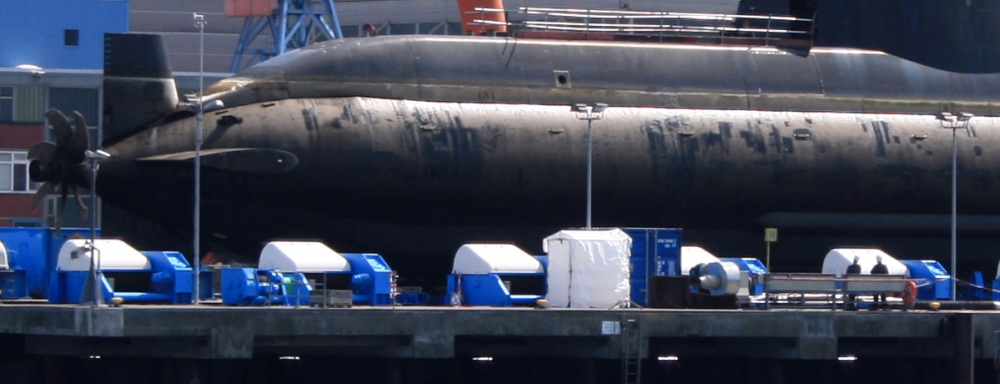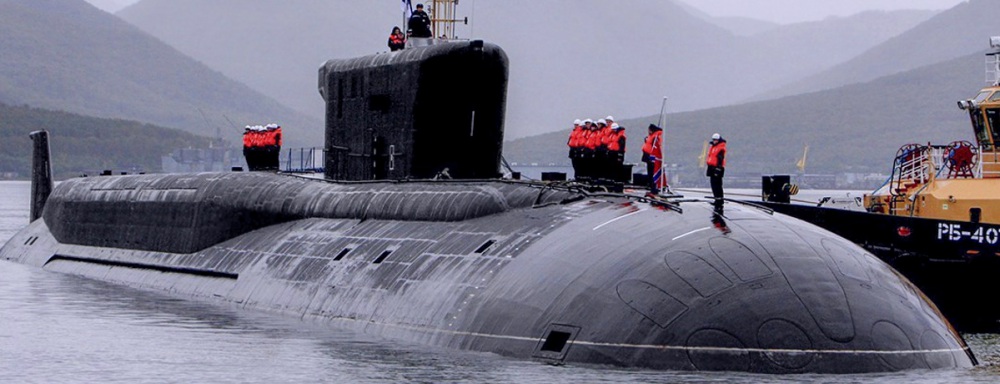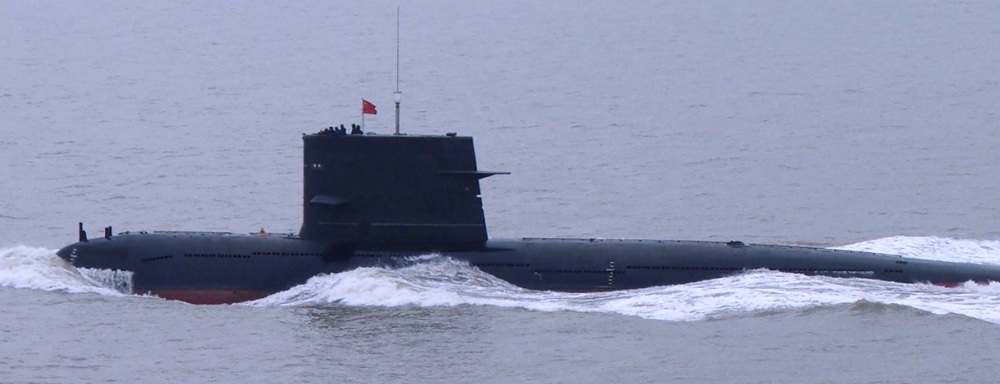
About the image
Capabilities at a Glance
The Hellenic Navy presides over an archipelago of about 2,000 islands. The Navy is chiefly concerned with the security of Greek’s sea lines of communication (SLOC) since a significant share of Greek commerce is maritime-oriented. Its headquarters is at Salamis, near Athens.1 The Navy currently employs a flotilla of eleven Type 209/1100, Type 209/1200, and Type 214 vessels, all of which were ordered from Germany’s Howaldtswerke-Deutsche Werft (HDW).
Total Submarines in Fleet: 11
-
Ballistic Missile Submarine (SSBNs): 0
-
Nuclear-Powered attack submarines (SSNs): 0
-
Diesel-electric attack submarines (SSKs): 11
-
Air-independent propulsion (AIP) enabled: 5/11
Submarines
History
The German company, HDW, constructed the Glavkos-class of three Type 209/1100 diesel-electric submarines and delivered the vessels to the Hellenic Navy between 1971 and 1973.2 In 1991, after almost 20 years of service, Greece initiated the Neptune I program to modernize the boats with advanced sonar and Harpoon missile technology.3 The first Glavkos-class was retrofitted in Germany from 1991-1993, while the others underwent renovations at the Salamis Naval Base in Greece at two- to three-year intervals terminating in 2000.4 In May 2011, reports stated the Hellenic Navy had decommissioned its first Type 209/1100 vessel, the HS Glavkos.5
In 1998, Greece ordered four new Papanikolis-class submarines. The first of the new class was built in Kiel while the others were constructed at Hellenic Shipyards. The Papanikolis-class submarines all feature air-independent propulsion (AIP) systems.6 In 2004, Greek navy experts found many technical issues with the Papanikolis such as excessive rolling when the submarine surfaced in high seas. HDW adjusted the Papanikolis but the Greek government refused to accept the fixed submarines in what some claim was a bid to renegotiate the initial purchase price of the vessels.7 Ultimately, in 2010 Greece agreed to accept the Papanikolis and to order two additional Type 214 submarines.8
Modernization and Current Capabilities
In 2002, the Hellenic Navy initiated the Neptune II program to modernize their Type 209 submarines. The Hellenic Navy was able to upgrade the HS Okeanos but in 2009 terminated the Neptune II because of a dispute with Germany company ThyssenKrupp Marine Systems (TKMS).9 In 2014, the Hellenic Navy further modernized the HS Okeanos by adding an AIP system and an Integrated Sensor Underwater System (ISUS) combat management system.10 In December 2018 the Hellenic Armed Forces’ Council of Chiefs of the General Staff approved two programs to acquire 36 533-millimeter heavyweight torpedoes for the four Papanikolis-class submarines and the HS Okeanos.11 From 2023 to 2025, the Navy plans to equip the four Papanikolis-class and the sole Okeanos AIP submarines with new Seahake Mod 4 torpedoes and their Leonardo decoy launching systems for self-protection against threats.12
In May 2011, HDW cancelled the contract for the additional two Type 214 vessels in response to bribery allegations involving Abu Dhabi Mar, the majority shareholder of Hellenic Shipyards since 2010, and Germany Company Ferrostaal. HDW still delivered the three vessels that had already been completed; the Pipinos, Matrozos, and Katsonis.13 The bribery allegations were found to be true and as of March 2019, eight individuals including Greek Defence Minsiters and Ferrostaal employees have been sentenced for money laundering and accepting bribes.14
Ship Biographies
Glavkos-Class (Type 209/1100) and Poseidon-Class (Type 209/1200)
Greece possesses three Glavkos-class and Poseidon-class diesel-electric attack submarines. Both classes of submarine are 55.9 meters long with a 6.2-meter-wide beam and can travel up to 21.5 knots when submerged. They can remain submerged for about 50 days without surfacing. Their weapons system can fire anti-ship missiles and torpedoes.15
Okeanos-Class
The Poseidon-class submarine HS Okeanos (S118) was originally a Type 209 vessel. However, after extensive Neptune II upgrades, the HS Okeanos more closely resembles the physical dimensions of the Papanikolis-class vessels and thus is now in its own separate class of submarines.16
Papanikolis-Class (Type 214)
Greece possesses four Papanikolis-class diesel-electric attack submarines. These submarines are 65 meters long with a 6.3-meter-wide beam and can travel up to 20 knots when submerged. They can remain submerged for about 50 days without surfacing and feature Air-Independent Propulsion (AIP) system. Their weapon systems include anti-ship missiles and torpedoes.17
Import-Export Behavior
Imports
Greece’s submarine fleet was imported from Germany’s Howaldtswerke-Deutsche Werft (HDW).
Exports
While Hellenic Shipyards is owned by HDW, Greece is not an exporter of submarines.
Explore the Collection
Australia Submarine Capabilities
Brazil Submarine Capabilities
Chile Submarine Capabilities
China Submarine Capabilities
France Submarine Capabilities
Germany Submarine Capabilities
Your are currently on
Greece Submarine Capabilities
India Submarine Capabilities
Indonesia Submarine Capabilities
Iran Submarine Capabilities
Israel Submarine Capabilities
Italy Submarine Capabilities
Japan Submarine Capabilities
Malaysia Submarine Capabilities
Netherlands Submarine Capabilities
North Korea Submarine Capabilities
Pakistan Submarine Capabilities
Russia Submarine Capabilities
Singapore Submarine Capabilities
South Korea Submarine Capabilities
Sweden Submarine Capabilities
Taiwan Submarine Capabilities
United States Submarine Capabilities
Submarine Detection and Monitoring: Open-Source Tools and Technologies
Stay Informed
Sign up for our newsletter to get the latest on nuclear and biological threats.
More on

Russia Submarine Capabilities
Overview of Russia's submarine capabilities and import-export behavior.
United States Submarine Capabilities
Overview of the United States' submarine capabilities and import-export behavior.

China Submarine Capabilities
A highlight of global trends in the sale and acquisition of diesel- and nuclear-powered submarines by country with capabilities, imports and exports. (CNS)
Glossary
- SSBN
- Ship, Submersible, Ballistic, Nuclear: A hull classification for a submarine capable of launching a ballistic missile. The "N", or nuclear, refers to the ship's propulsion system. SSBN's are generally reserved for strategic vessels, as most submarine launched ballistic missiles carry nuclear payloads. A non-strategic vessel carries the designation SSN, or attack submarine.
- Diesel-electric submarine
- Diesel-electric submarine: A submarine with a diesel-electric transmission. Diesel-electric transmissions require access to oxygen for the diesel generator to charge the submarine’s batteries or drive the motor. This type of submarine is thus louder and must surface more frequently than a nuclear-powered submarine. A diesel-electric submarine can fire conventional cruise missiles against land targets, and in theory, can also carry nuclear-tipped cruise missiles. Diesel-electric submarines are significantly cheaper to build and purchase than nuclear-powered vessels, which makes them the vessel of choice for smaller navies.
- Air Independent Propulsion Technology (AIP)
- Air Independent Propulsion Technology (AIP): A propulsion system that uses liquid (or compressed) oxygen or hydrogen fuel cells, thereby allowing submarines to stay submerged for longer periods without the need for external sources of oxygen. This increased endurance also increases a submarine’s survivability.
Sources
- Timothy Scott Baxter, “Keeping a fragile peace,” United States Naval Institute Proceedings, March 2000, Vol. 126, No. 3, pp. 78-79; in ProQuest Information and Learning Company, http://proquest.umi.com.
- “Χαρακτηριστικά Υποβρυχίων τύπου “Ποσειδών” [Characteristics, ’Poseidon’-type Submarine],” Hellenic Navy, www.hellenicnavy.gr.
- “Χαρακτηριστικά Υποβρυχίων τύπου “Γλαύκος” [Characteristics, ’Glavkos’-type Submarine],” Hellenic Navy, www.hellenicnavy.gr.
- “Χαρακτηριστικά Υποβρυχίων τύπου “Γλαύκος” [Characteristics, ’Glavkos’-type Submarine],” Hellenic Navy, www.hellenicnavy.gr. “Submarine Forces, Greece,” Jane’s Underwater Warfare Systems, 2 November 2010.
- “Greek submarine to be decommissioned,” Turkish Navy, 28 May 2011, www.turkishnavy.net.
- Pericles Zorzovilis, “Hellenic Navy Rejects First Type 214 Sub,” Defense News, 1 June 2009. https://advance.lexis.com.
- “Greek Inspectors Eye German Sub Deal,” UPI, 28 March 2011, www.lexisnexis.com; “Submarine Forces, Greece,” Jane’s Underwater Warfare Systems, 2 November 2010.
- “Submarine Forces, Greece,” Jane’s Underwater Warfare Systems, 2 November 2010.
- Theodore Valmas, “HS Okeanos re-delivered to Hellenic Navy,” Janes, 20 October 2014, www.janes.com.
- “Hellenic Navy Inducts New Super Vita-class Fast Attack Craft Missile - FACM in Its Fleet,” Navy Recognition, 20 October 2015, www.navyrecognition.com.
- Theodore L. Valmas, “Hellenic Navy Torpedo, Helicopter Programmes Move Ahead,” Jane’s 360, 11 January 2019, www.janes.com.
- Dimitris Mitsopoulos, “The Future of The Hellenic Navy Fleet,” Naval News, 22 November 2022, www.navalnews.com.
- “German Group Pulls Out of Greek Submarine Order: Minister,” Agence France- Presse, 16 May 2011, www.lexisnexis.com; “HDW Cancels Contract with Greek Submarines,” International Resource News, 25 May 2011, www.lexisnexis.com; “German HDW Cancels EUR 650m Order in Greece - Report,” SeeNews Shipping, 24 May 2011, www.lexisnexis.com.
- “The Greek Submarine Scandal,” World Peace Foundation, accessed 25 July 2019, https://sites.tufts.edu.
- “Greece,” IHS Jane’s Fighting Ships, 2016, ihsmarkit.com.
- “HS Okeanos (S-118),” Hellenic Navy, accessed 25 July 2019, www.hellenicnavy.gr.
- “Greece,” IHS Jane’s Fighting Ships, 2016, ihsmarkit.com.
